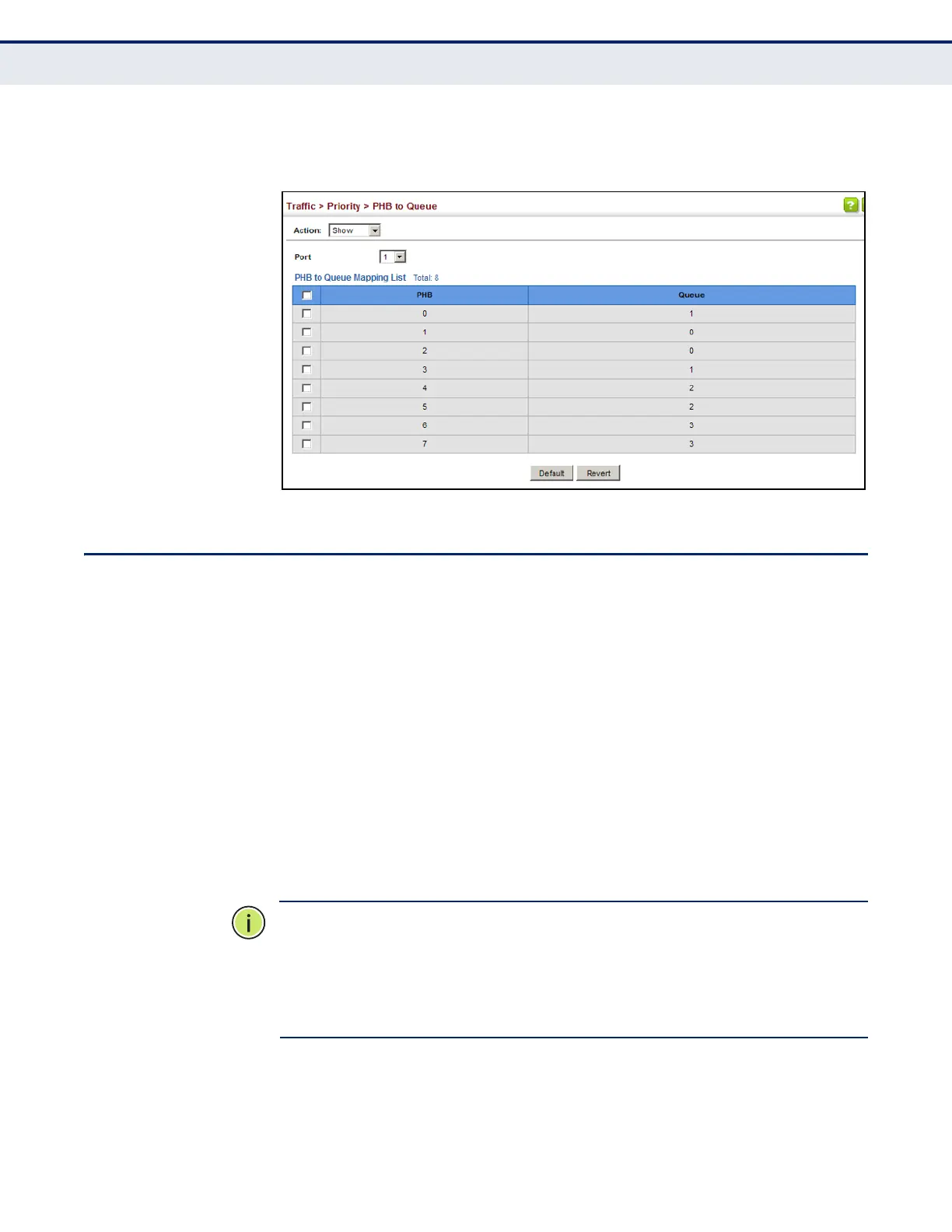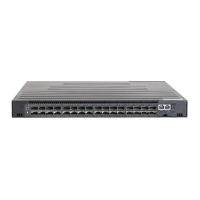C
HAPTER
10
| Class of Service
Layer 3/4 Priority Settings
– 275 –
3. Select an interface.
Figure 131: Showing CoS Values to Egress Queue Mapping
LAYER 3/4 PRIORITY SETTINGS
Mapping Layer 3/4 Priorities to CoS Values
The switch supports several common methods of prioritizing layer 3/4
traffic to meet application requirements. Traffic priorities can be specified in
the IP header of a frame, using the priority bits in the Type of Service (ToS)
octet, or the number of the TCP/UDP port. If priority bits are used, the ToS
octet may contain three bits for IP Precedence or six bits for Differentiated
Services Code Point (DSCP) service. When these services are enabled, the
priorities are mapped to a Class of Service value by the switch, and the
traffic then sent to the corresponding output queue.
Because different priority information may be contained in the traffic, this
switch maps priority values to the output queues in the following manner –
The precedence for priority mapping is DSCP Priority and then Default Port
Priority.
N
OTE
:
The default settings used for mapping priority values from ingress
traffic to internal DSCP values are used to determine the hardware queues
used for egress traffic, not to replace the priority values. These defaults are
designed to optimize priority services for the majority of network
applications. It should not be necessary to modify any of the default
settings, unless a queuing problem occurs with a particular application.

